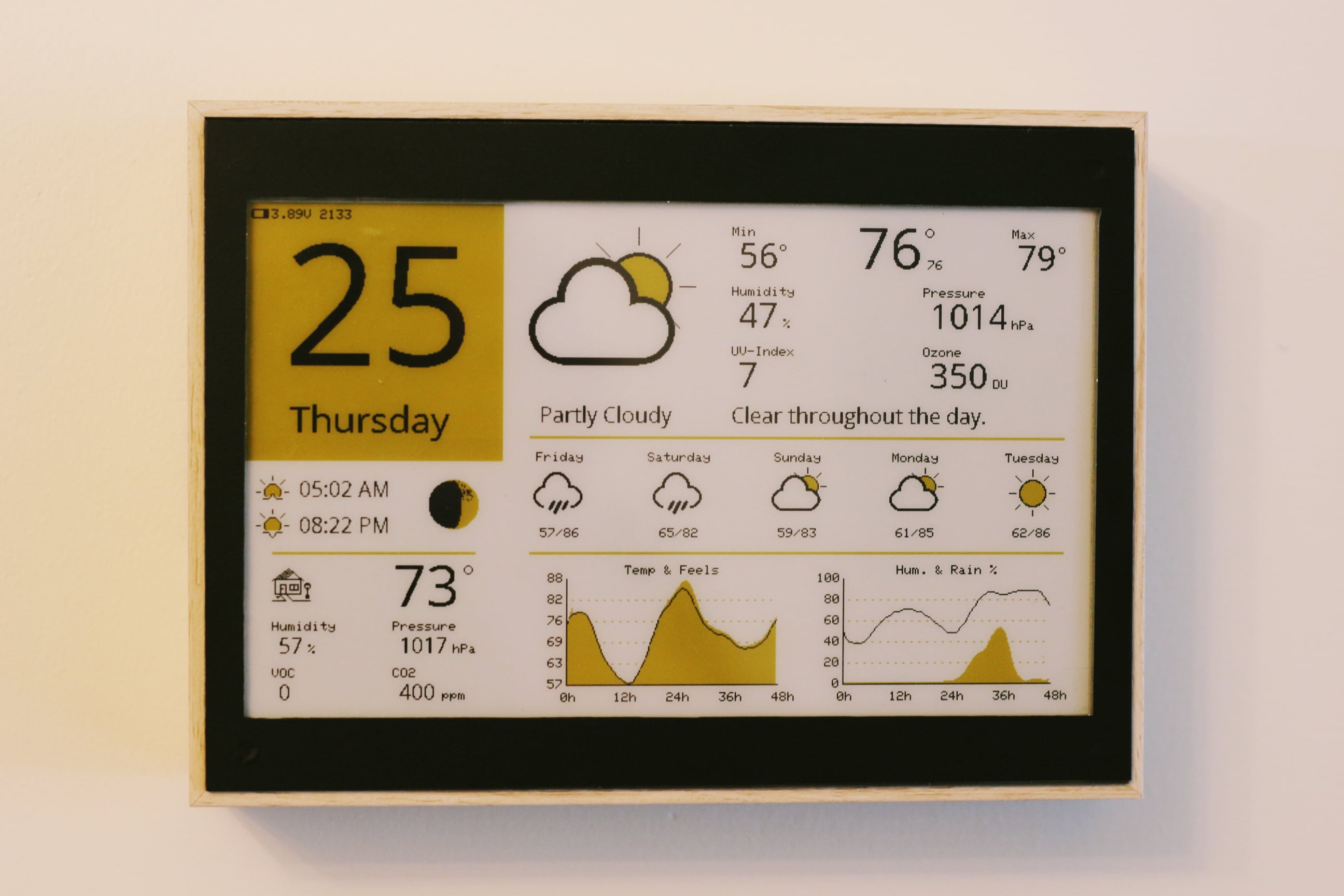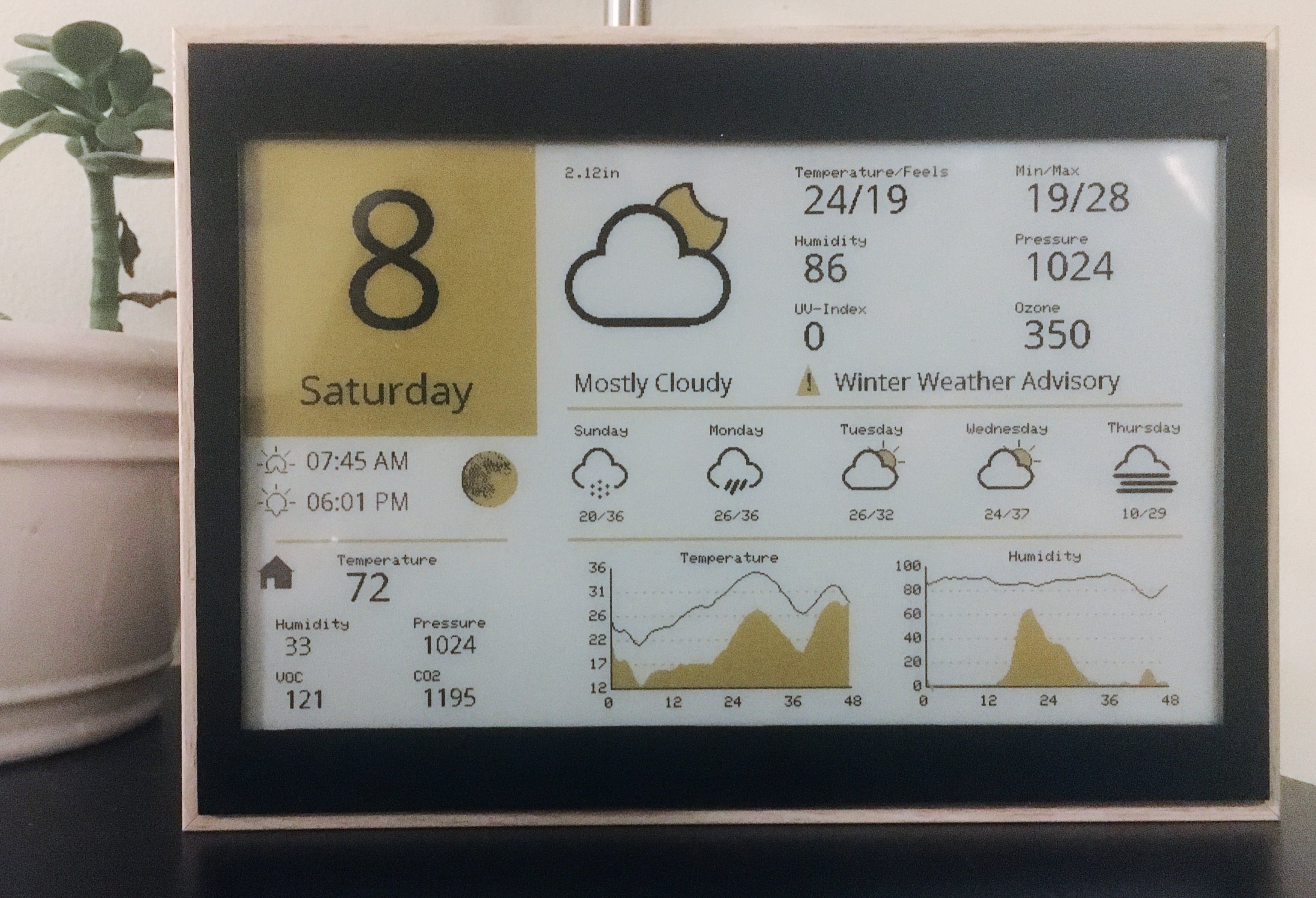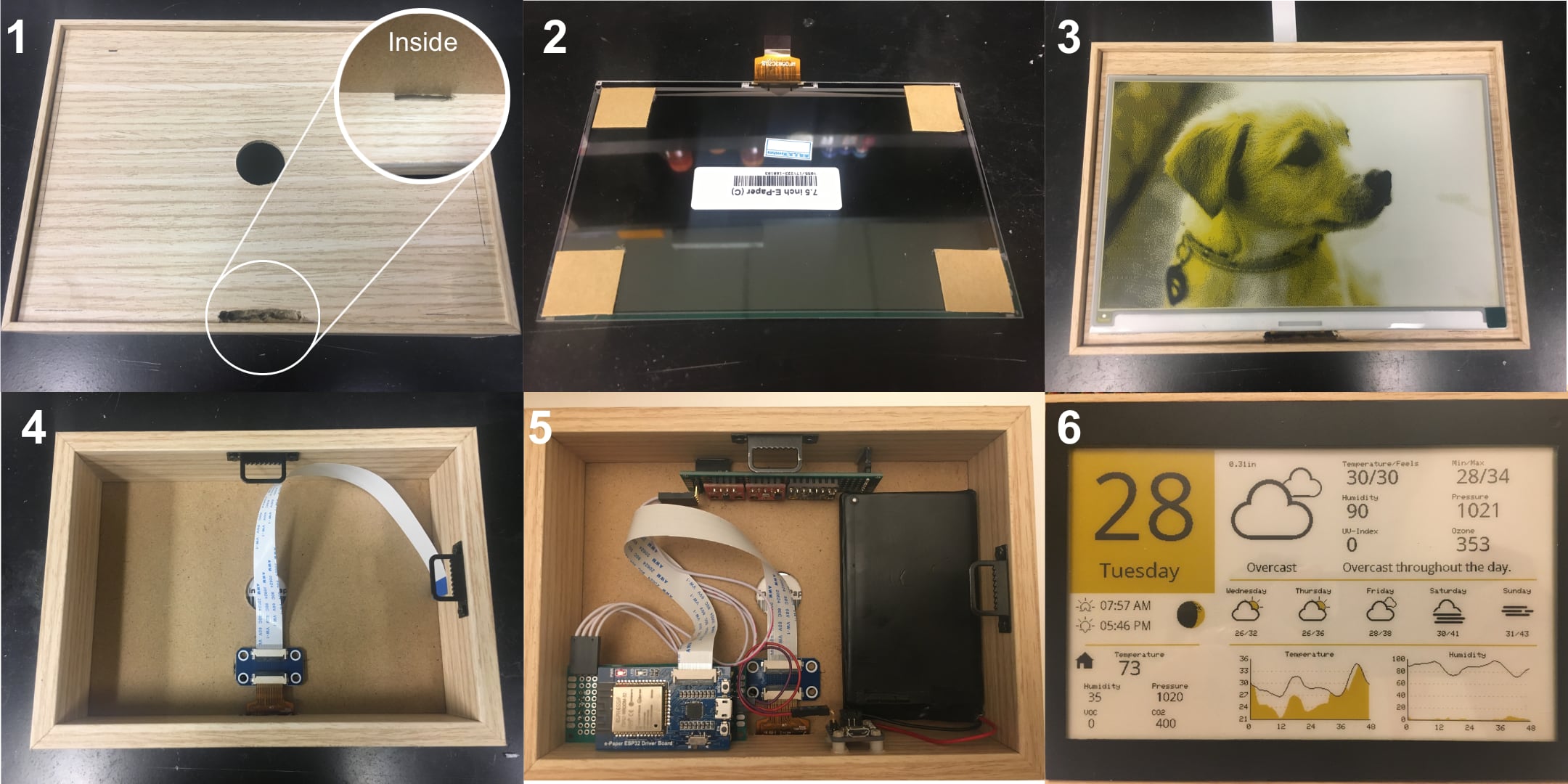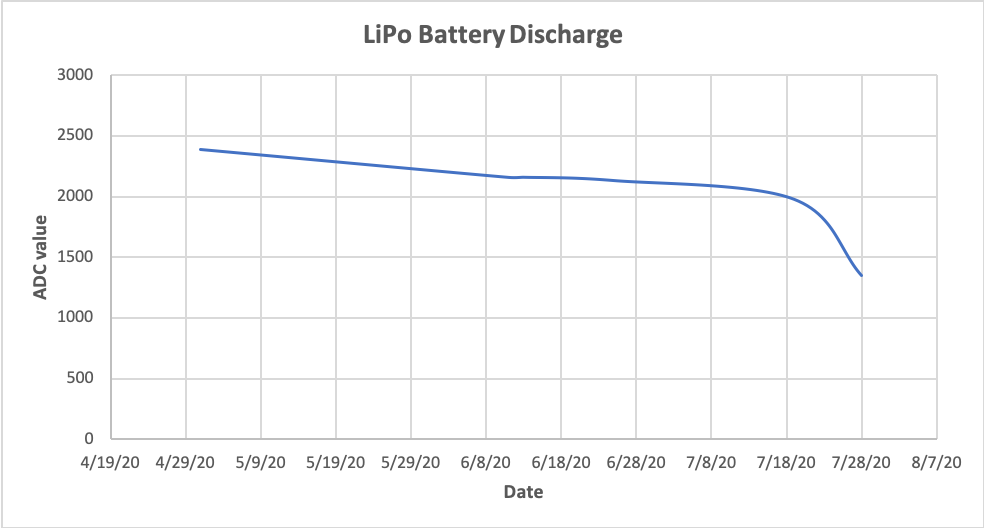7.5 in three color eInk Display, showing the current weather and five day forecast from Dark Sky as well as indoor sensor measurements using an ESP32
Updated Layout: Larger font for temperature and units. New icon for in-house values and rearranged values for current weather.
Old Layout: Initial layout.
The weather data is received using the Dark Sky API. You can get a developer account with 1000 API calls for free. The display is updated about every 30 min and is performing two API calls, one to receive the current data and daily forecast and one to receive the 48h hourly forecast. The connection is using the https protocol.
Since Apple Inc. has acquired Dark Sky, I'm looking for a long term alternative and ClimaCell looks like a very promising project, providing hyperlocal weather data beyond the standard measurements.
- Rectangular hole cut at the bottom of the frame for the display for the displays FPC cable.
- Double sided sticky tape added to the corners of the display's backside.
- The display glued into the center of the picture frame.
- Inside, the FPC adapter is glued to the back with hot-glue.
- Insert all the components into the back of the frame. Female connectors are glued into the frame, so the two boards (sensors & controller) can be easily attached with male pin connectors and be removed at any time. The battery is attached with velcro tape.
- Cover the display with the plexiglas. To cover up the gap between the display and the frame, a vinyl frame was laser-cut from a vinyl sheet with a sticky back and glued onto the plexiglas.
| ESP32 | PIN | Function |
|---|---|---|
| SCK | IO21 | Clock |
| SDA | IO22 | Data |
| GND | GND | Ground |
| VIN | 5V | 5 Volt |
| 3.3V | 3.3V | 3.3 Volt |
| GPIO04 | IO4 | Digital Pin high/low |
| GPIO34 | IO34 | Analog Pin 0-4095 |
Thanks to Robert Zegarac for his help designing the circuit to measure the battery charge and powering down the sensors as well as soldering the SMD parts.
- Picture Frame
- Make sure to have enough room in the back for the electronics
- Controller (Driver)
- Display
- 7.5inch e-Paper HAT (C) - V1, resolution 640x384
- Sensors
- Sparkfun HTU21D - Humidity/Temperature - discontinued
Sparkfun BME180 - Pressure/Temperature - discontinued- Adafruit BMP280 - Pressure/Temperature - replacement for BME180 since it supports 5V input
- Adafruit CSS811 - MOC/eCO2
- Power
- LiPO battery - can be one off the shelf or in my case I used an old laptop cell (3.7v @ 16.07Wh).
The power regulator on the controller board is not the best when using the board with battery, dropping out too early not making use of the batteries full capacity. It has been replaced with a AP7361C-33ER-13 from Digi-Key, which has a lower dropout voltage (0.36V @ 1A).
- Display Driver and GFX
- Fonts
- OpenSans - Standard open font
- GNU FreeFont - included in Adafruit's GFX library
- Other
- ArduinoJson - Powerful JSON parser for Arduino
- WiFi - Arduino IDE
- HTTPClient - Arduino IDE
- WiFiClientSecure - Arduino IDE
- math - Arduino IDE
- David Bird (G6EJD) - Fantastic display for weather data from Open Weather Map
- Weather Icons (Erik Flowers) - Beautiful icon font for weather icons
The project uses the popular open source font Open Sans for all larger fonts. To reduce the amount of memory used, the character set has been reduced to the ones required. To create the custom font files the fontconvert script packaged with the Adafruit GFX library was used.
The font files can be generated in the following way, where size is the desired font size, and first character and last character are the positions within the ascii table.
fontconvert <font.ttf> <size> <first character> <last character> > <out.h>A nice video on how to create these files by Kris Kasprzak can be found here.
For small fonts like the ones used for units and in the graph the standard fonts packaged with the Adafruit GFX library were used.
All icons depicting the current weather and forecast are created after the beautiful set of icons by Erik Flowers (Weather Icons). They are not bitmaps but all drawn using the shapes provided by the GFX library, allowing them to be scaled depending on where they are used and ultimately saving memory.
The moon displayed to represent the current moon phase is not a bitmap. The shadow is drawn depending on the value provided by the weather API ranging between 0 - 1. The surface was generated taking a picture of a full moon and turning it into a true black and white image (dithering). After resizing it to match the size on the display a short JavaScript script was used to determine all black pixels and output the code required by the GFX library to draw the surface. The moon cannot be scaled, when including the surface, but on the other hand no bitmap is required.
The second version of the house depicting indoor values collected is more detailed. The window and streetlight are yellow or have a yellow cone, depicting light at night. When the display is in "night mode" and only updating every 2 hours, the "lights" are on to indicate the energy saving mode.
The two graphs have each two plots a black line plot and a yellow filled area plot. The temperature graph shows the predicted temperature (black line) and apparent temperature (yellow area) for the next 48 hours. The other one shows the relative humidity (black line) and rain probability (yellow area) forecast for the same timeframe.
The sensors in the frame collect data to display the indoor climate. The frame is now hanging on the wall with a little gap and the values are comparable to the thermostat in the house, indicating that there is enough air flow to acquire reasonable measurements. The CCS811 is a difficult sensor, since it needs time to heat up for a correct measurement of volatile compounds (VOC) and eCO₂. The sensor is run for 30s before the display is updated. Most of the time it is showing 400 ppm for eCO₂ and 0-20 for VOC. Due to power saving the sensor can't be run for longer, for stable reads, but also the lack of an available calibration, makes the sensor more of a guesstimate than an actual measurement at this point.
The first version of the code would update the display every 30 minutes and together with the CCS811 not being able to properly powering down, it would last for about a week.
The new version updates the display every 30 minutes during the day and only every 2 hours at night. Also the hardware has been updated, allowing to turn off the power for the sensors completely, resulting in a battery life of about 3 months now (see battery discharge graph). The battery low icon will now be displayed when the ADC value to monitor the battery charge drops below 2000.




